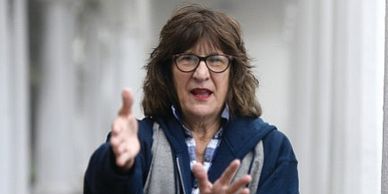On this episode of Solutions News, we are turning a spotlight on activists and their important work. For these truly dedicated people, neither age nor physical condition is an impediment to successfully being the change that they want to be. While these activists are certainly inspiring, their stories demonstrate the ways that anyone can help change the world with simple actions.
Later on in the show we talk with our guest, Hillary Hauser, who is an amazing activist herself. As a lifetime conservationist, Hillary has used her work as a photojournalist to bring attention to the damage caused by polluting the oceans. She founded an organization, Heal the Oceans, to tackle that exact problem.
Regardless of political ideology, the world seems more chaotic and filled with problems than ever. However, that doesn’t mean that we are incapable of creating solutions that will lead us into the future. Being an activist is a choice anyone can make to focus on making the world better by affecting change on a problem, political or social.
Spotlight on Activists
For our first story, we turned the spotlight on a few individuals who are having an outsize impact on our world. The first is Santa Barbara resident and according to Politico, "the most powerful activist in America", Ady Barkan. Barkan has worked tirelessly over the past few years to lobby Congress and create change despite the fact that he has ALS, or Lou Gehrig’s disease. Though his physical condition is deteriorating, Ady is fighting with everything he has to make the world a better place for people like his two year old son. His resolve and determination are an inspiration to us all.
Our second spotlight for the day we turned on two sister from Bali, Melati and Isabel Wijsen. When they were 10 and 12 (in 2013) the girls learned in school about how Nelson Mandela, Princess Diana and Mahatma Gandhi created change in the world. They were inspired to start an organization called "Bye Bye Plastic Bags" to get rid of the plastic that litters the beaches all over their home of Bali, Indonesia. Though it has taken some time, their tireless efforts are paying off. On December 24, 2018, the Governor of Bali pledged to officially end all use of single-use plastic by 2019. This initiative will give businesses in Bali six months to make the transition away from plastic and optimistically, can reduce pollution by up to 70%. The work of the Wijsen sisters is even more amazing considering that their activism has made ripples all around the world. Since they started their work, over 40 countries have instituted some sort of ban on plastic bags. Most recently, here in the United States, New York governor Andrew Cuomo introduced a similar ban just this week.
What Makes a Successful Activist?
Activism is something that anyone can do with a little bit of effort. Changing society is not always about a tangible result like getting a bill passed or raising money to build a new school. An important question to ask for such a broad solution like activism is, “What makes a successful activist?”
Ady Barkan, the Wisjen sisters and Hillary Hauser have all succeeded because they created a conversation around a subject or subjects that matter deeply to them. By using personal situations as starting points for activism, these activists have brought issues to the forefront of the public attention. More importantly, they have made it impossible for people to live their lives without encountering the ideas and topics they are trying to lobby for.
As a result, a general rule for successful activism is to work on a personal level. Being able to identify a problem to fix is only the first step of the process. It is important to start conversations locally, both to engage people on a given topic, but also to listen to what they have to say about the issue. A collective group, rather than an “individual who knows best” will likely work better for the community. Moreover, it is essential to have multiple targets for implementing a solution. For example, a legislative solution is a great way to get a plastic bag ban into place, but it is only half of the solution. It is equally important to change the way the people think and behave, so they phase single-use-plastic out of their lives because they see the damage that it does to the environment. While the main intention is focusing on a single issue, changing how people think about an issue is what creates lasting change. A plastic bag ban makes people into environmentalists who begin to consider the consequences of every day actions.
Other activists have been successful for using their ideas and fame in similar ways. Malala Yousafzai used her fight for education against the Taliban to create a global movement empowering women and promoting women getting the education they deserve. We have also talked on the show about Greta Thunberg, who has used her platform to lambast the world over a lack of action on climate change, which is the seminal issue of our time. In both cases, being nominated for a Nobel peace prize is a recognition of ideas and courage rather than a measure of success.










